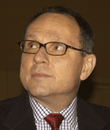Emphasize personal strengths when addressing substance abuse with teens
Many clinicians approach questions of substance abuse in their adolescent patients from the wrong perspective: They focus solely on the negative — the risk factors — instead of on the positive — teens' numerous protective factors. The result, say researchers from Texas and Maryland, is that patients and parents get less help than pediatricians can actually provide.

Many clinicians approach questions of substance abuse in their adolescent patients from the wrong perspective: They focus solely on the negative - the risk factors - instead of on the positive - teens' numerous protective factors. The result, say researchers from Texas and Maryland, is that patients and parents get less help than pediatricians can actually provide.
"Whether a teenager does or does not use (drugs) is not a random thing," explained Alain Joffe, MD, MPH, of Johns Hopkins Medical Center in Baltimore. "There is a balance between risk factors and protective factors that determines the outcome."
Rather than focusing on risk factors that may lead to substance abuse, Dr. Joffe advised pediatricians to focus on protective factors. The key, he said, is to bolster the strengths that help teens avoid or escape serious substance abuse.
"The presence of one or two factors in either direction is not determinative," he told the AAP 2004 National Conference and Exhibition yesterday. "It is the total picture that determines the final outcome."
One of the strongest protective factors includes teens' own disapproval of drug use. The annual Monitoring The Future survey by the National Institute of Drug Abuse has found consistently that most teens disapprove of drug use. Disapproval extends to binge drinking and marijuana, the two most common substances of abuse among adolescents.
Other individual protective factors include high intelligence and achievement orientation, academic success, strong self-esteem, good coping skills, and strong social orientation.
On the family front, parents are pivotal, Dr. Joffe explained. Parental models that do not include the use of tobacco, alcohol, or prescription medications increase the likelihood that a teen will not use drugs. So does a strong, nurturing home environment and parents who are authoritative rather than authoritarian.
School also plays a vital role. Schools that offer strong opportunities for academic success and high levels of student and parental involvement discourage drug use. So does feeling connected with the school and academic success. Students who do well academically tend not to become involved in substance abuse. Conversely, students who do poorly in school are far more likely to begin substance abuse.

Age also counts. Most adolescents dabble in substance abuse, noted Janet Williams, MD, of the University of Texas Health Sciences Center. The earlier a child experiments with drugs, the more likely he or she is to become heavily involved.
"Starting to experiment with marijuana or alcohol at 16 or 17 is quite different from starting at 13 or 14," Dr. Williams said. "The younger kids are at significantly higher risk."